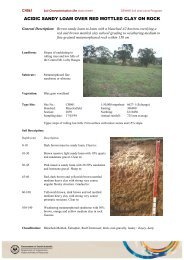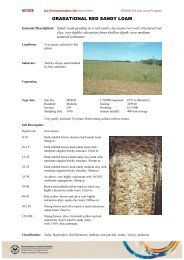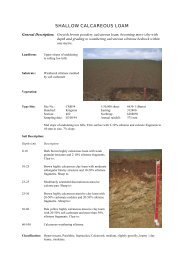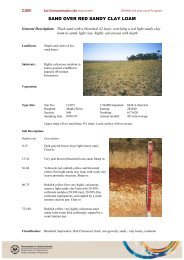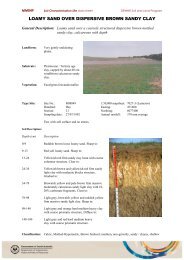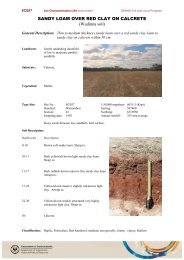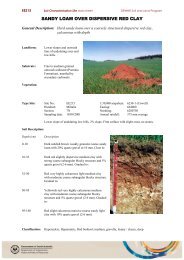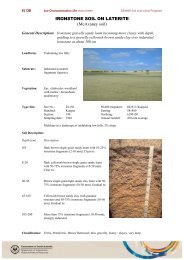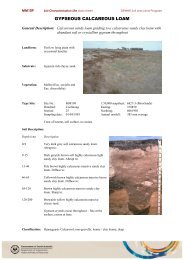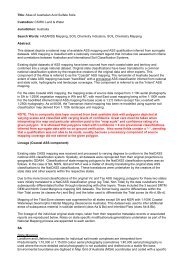You also want an ePaper? Increase the reach of your titles
YUMPU automatically turns print PDFs into web optimized ePapers that Google loves.
Table 30: Estimation method for the type of impeding layerCodeEstimation method1 Direct field observation of root patterns for the plant type (ACP, PP, PNV) withsupporting soil analytical data within the land-unit tract2 Interpretation of analytical data (relying on published limits for plants inquestion)3 Direct field observation of root patterns for the plant type (ACP, PP, PNV) withsupporting soil analytical data for similar soils in the region4 Interpretation of analytical data (relying on published limits for plants inquestion) for similar soils in the region5 General experience with morphologically similar soilsWater retention and available water capacityAn estimate is made of the volumetric water content at –10 kPa (notional field capacity) and –1.5 MPa(notional wilting point) of the fine earth fraction for the five layers (the procedure for discounting the effectof coarse fragments is presented below). The units are mm 3 /mm 3 . An accompanying method code is alsorecorded (Table 31). The estimates of volumetric water content are averages for each layer and they areused with the layer thicknesses to calculate an approximate profile available water capacity. Note thatwater contents at –10 kPa and –1.5 MPa can be estimated using Williams et al. (1992) on the basis offield texture, bulk density and structure grade (if necessary, calculate the estimates with the spreadsheetfrom www.asris.csiro.au).The control sections for estimating volumetric water contents at –10 kPa and –1.5 MPa are the same asthose used for texture, coarse fragments and bulk density. However, Layer-5 thickness will often beproblematic. In landscapes with deep regolith, an arbitrary maximum corresponding to the likely maximumdepth of rooting by perennial native plants may be sufficient. Note that the estimates of water retention(θ –10kPa and θ –1.5MPa ) for Layer 5 usually relate to a depth of 1.0–1.5 m, and that application of thediscounting method for water extraction (see below) means that the contribution of materials at depth isheavily discounted in the calculation of plant available water capacity.Plant available water capacity can be estimated for the three generalized types of vegetation noted above(viz. annual crops and pastures, perennial pastures, and native trees and shrubs) by discounting theavailable water capacity for each layer. This discounting can be based on generalized models of rootdistribution and likely water extraction patterns (e.g. McKenzie et al. 2003) or through estimation of thenon-limiting water range for each layer (e.g. using information on bulk density and nutrient availability).If the surface layer is a peat, Layer-1 θ –10 kPa and θ –1.5MPa are recorded only if direct measurements areavailable. Reliable pedotransfer functions for Australian conditions are not yet available and very few suchsoils have been characterized.46




